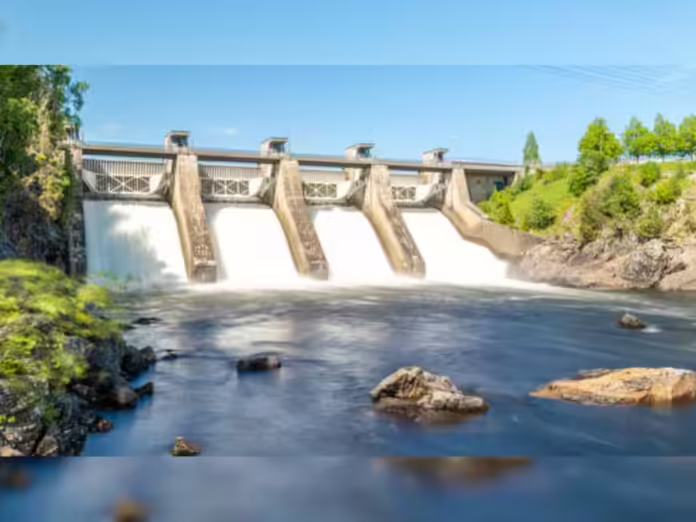The Indian government has recently announced the allocation of Rs. 4,136 crore to develop 15 GW of hydropower in the Northeast region. This strategic move is part of the country’s broader push to enhance its renewable energy capacity and promote sustainable development. The investment aims to harness the region’s untapped hydropower potential, contributing to India’s renewable energy goals and providing a major boost to the local economy.
A Major Boost to Hydropower Development in the Northeast
The Northeast region of India, comprising states such as Assam, Arunachal Pradesh, Meghalaya, Manipur, Mizoram, Nagaland, Tripura, and Sikkim, is endowed with vast hydropower potential due to its numerous rivers and hilly terrain. However, much of this potential remains underutilized. The central government’s allocation of Rs. 4,136 crore is set to change this by accelerating the development of hydropower projects across the region.
- Targeting 15 GW of Hydropower Capacity: The government’s ambitious plan focuses on developing 15 GW (gigawatts) of hydropower capacity, which will significantly increase the renewable energy output from the region. This will not only contribute to India’s energy security but also help in meeting its international commitments to reduce carbon emissions and combat climate change.
- Strategic Importance of the Northeast: The Northeast is a crucial region for hydropower development due to its abundant water resources and topography. Developing hydropower in this region will also help address energy shortages and support the region’s economic growth by providing a reliable and sustainable energy source.
- Focus on Sustainable Development: The government’s investment is aligned with its focus on sustainable development and the use of clean energy sources. Hydropower is a renewable and environmentally friendly source of energy, making it a key component of India’s strategy to transition to a low-carbon economy.
Key Hydropower Projects and Initiatives
The allocation of Rs. 4,136 crore is expected to fund several key hydropower projects in the Northeast. These projects will be implemented in collaboration with state governments, private players, and international agencies to ensure timely completion and adherence to environmental standards. Some of the prominent projects include:
- Subansiri Lower Hydroelectric Project: Located on the Subansiri River, this project is one of the largest under development in the region. It is expected to generate 2,000 MW of power upon completion, significantly contributing to the region’s hydropower capacity.
- Dibang Multipurpose Project: The Dibang Project in Arunachal Pradesh is another major initiative aimed at generating 2,880 MW of power. It is also expected to provide flood control benefits and enhance water storage capabilities.
- Tawang Hydroelectric Projects: The Tawang basin in Arunachal Pradesh is another focus area, with several hydroelectric projects in various stages of planning and development. These projects are expected to add substantial capacity to the region’s energy output.
Benefits to the Northeast and National Energy Grid
The development of 15 GW of hydropower in the Northeast will have multiple benefits for both the region and the national energy grid. The influx of investment and development in hydropower will:
- Boost Economic Development: The hydropower projects will create jobs, stimulate local economies, and improve infrastructure in the region. This is expected to uplift the socio-economic status of local communities, providing them with better employment opportunities and access to basic amenities.
- Strengthen Energy Security: Increasing hydropower capacity will reduce dependence on fossil fuels and enhance the stability of the national energy grid. It will also help meet the growing energy demand in the country and provide a reliable power supply to the Northeast and other regions.
- Promote Environmental Sustainability: Hydropower is a clean and renewable energy source that produces no greenhouse gas emissions. Developing hydropower projects will contribute to India’s goals of reducing its carbon footprint and promoting sustainable energy sources.
Challenges and the Way Forward
While the government’s investment is a significant step towards realizing the hydropower potential of the Northeast, there are challenges that need to be addressed to ensure the successful implementation of these projects. These include:
- Environmental Concerns: Hydropower projects can have environmental impacts, such as the displacement of communities and potential effects on local ecosystems. It is crucial to conduct comprehensive environmental impact assessments and implement mitigation measures to minimize these impacts.
- Regulatory and Administrative Hurdles: Ensuring smooth coordination between central and state governments, obtaining necessary clearances, and managing land acquisition processes are essential for timely project completion.
- Community Engagement and Support: It is vital to involve local communities in the planning and development process, ensuring that their concerns are addressed and they benefit from the projects.
The central government’s allocation of Rs. 4,136 crore to develop 15 GW of hydropower in the Northeast represents a major investment in India’s renewable energy future. By harnessing the region’s abundant hydropower potential, India can boost its renewable energy capacity, promote sustainable development, and enhance energy security. With careful planning, community involvement, and a commitment to environmental sustainability, the Northeast can emerge as a key player in India’s clean energy transition.




